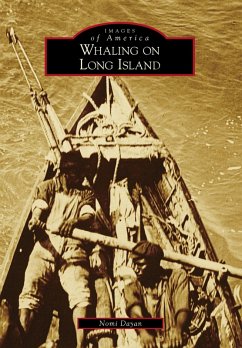The story of whales and the whalers who followed them is inextricably tied with Long Island's rich maritime history. Before the Long Island Expressway, strip malls, golf clubs, and suburban sprawl, calls of "e;Thar she blows!"e; rang out from Long Island harbors and ships. This book chronicles the rise and fall of whaling on the island and describes local whaleship fleets that traveled to the far corners of the world, the personalities behind local enterprises, and the villages whose cultures and economies grew from the industry. Be transported to a time when whalers roamed the streets between journeys, shipbuilders worked in the harbors, captains charted their expeditions, and whaleship masts seemed to pierce the clouds in Long Island's pursuit of the largest creatures in the world.
Dieser Download kann aus rechtlichen Gründen nur mit Rechnungsadresse in A, B, BG, CY, CZ, D, DK, EW, E, FIN, F, GR, HR, H, IRL, I, LT, L, LR, M, NL, PL, P, R, S, SLO, SK ausgeliefert werden.

